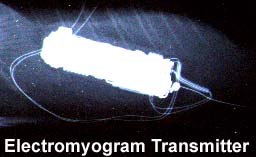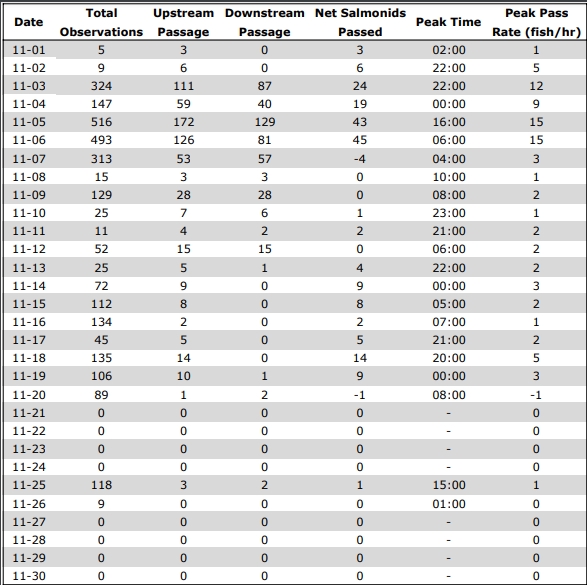Physiological Telemetry
Abstract
Conventional techniques for implanting electrodes into axial swimming musculature of fish are reviewed. A new device is described that reduces time for electrode implantation, ensures constancy in electrode orientation, implantation depth, and separation distance. This device is inexpensive, simple to build, and easy to use.
Abstract
Electromyogram (EMG) telemetry was used to measure the relative physical output required for smallmouth bass (Micropterus dolomieu) to use two different Denil fishway designs. The fishways differed in length, slope and water velocity. Smallmouth bass (n = 7) were implanted with transmitters that broadcast integrated signals representing axial muscular contraction rates to a submerged antenna array within each fishway. There was a significant positive relationship between activity of the swimming muscles and the position of each fish between the fishway entrance and exit. Mean EMG pulse rates from each fish that swam from the entrance to exit of a short, steep fishway increased by 13 – 55 % relative to basal levels. Maximum subsurface water velocities during fishway use were 0.4 – 1.4 m/s. In a long fishway with reduced slope and resting pools, maximum subsurface water velocities were 0.35 - 0.9 m/s and EMG levels increased by 17 to 47 % of basal levels as fish swam from the entrance to the exit. EMG levels were significantly greater in the upper regions of each fishway compared to the entrances. EMG levels from areas near the fishway exits were also significantly greater than maximum EMG levels recorded during critical swimming speed trials. Smallmouth bass appeared to exceed their aerobic scope of activity during ascent of both fishways. EMG data reflected combinations of burst and prolonged swimming activity and indicated the relative differences in muscular activity and physical output required to ascend each fishway type.






